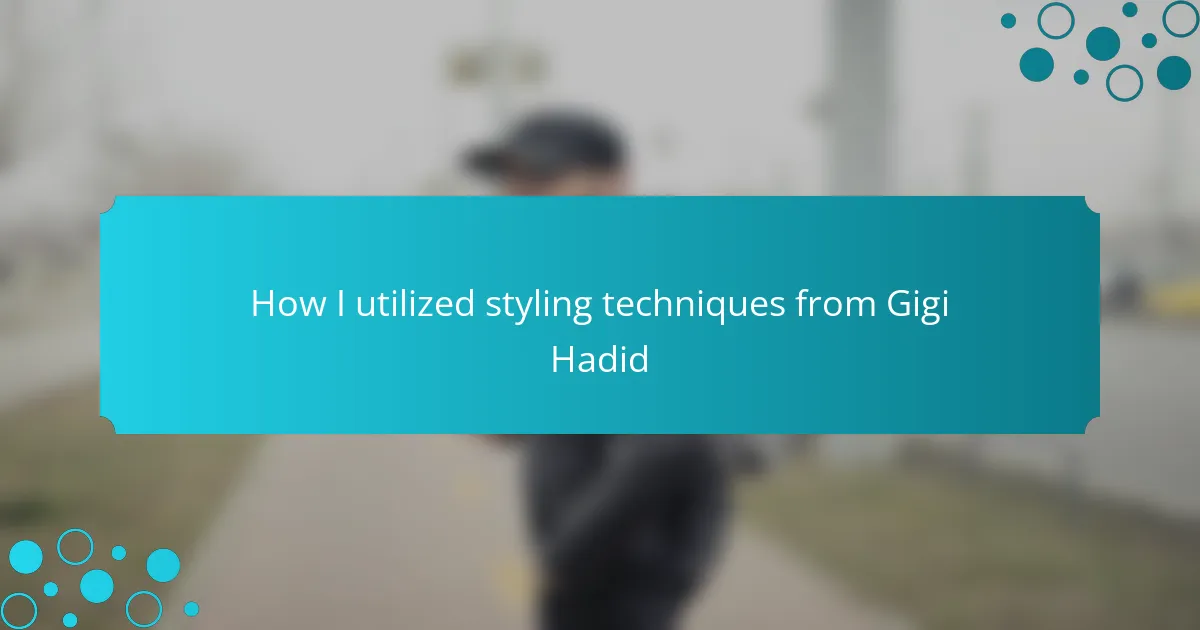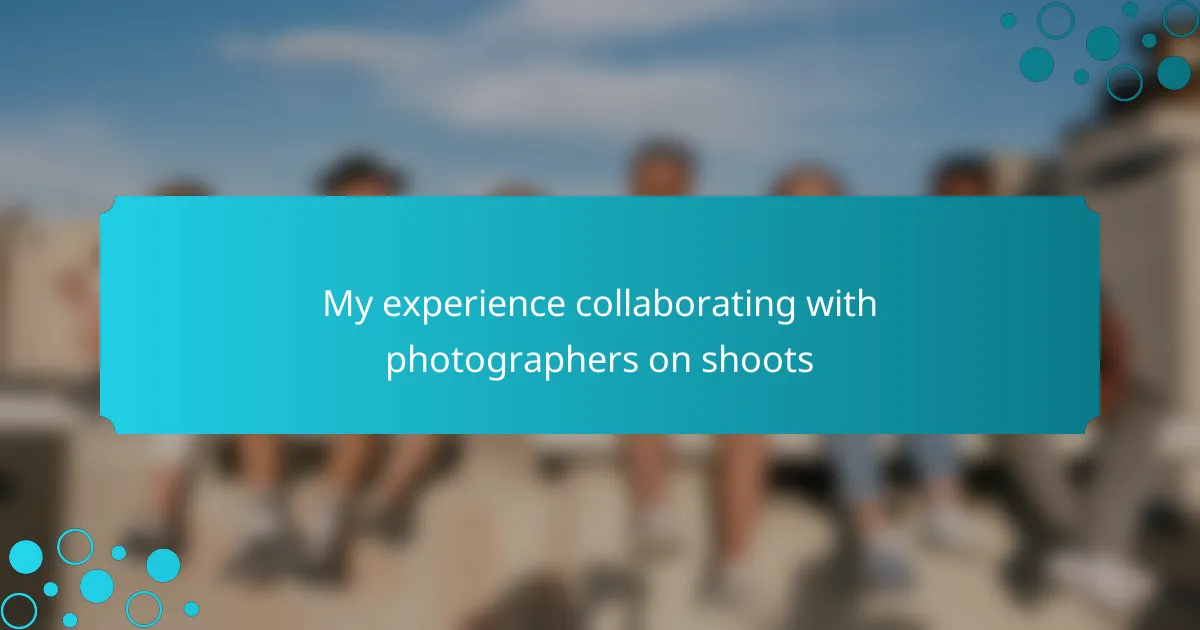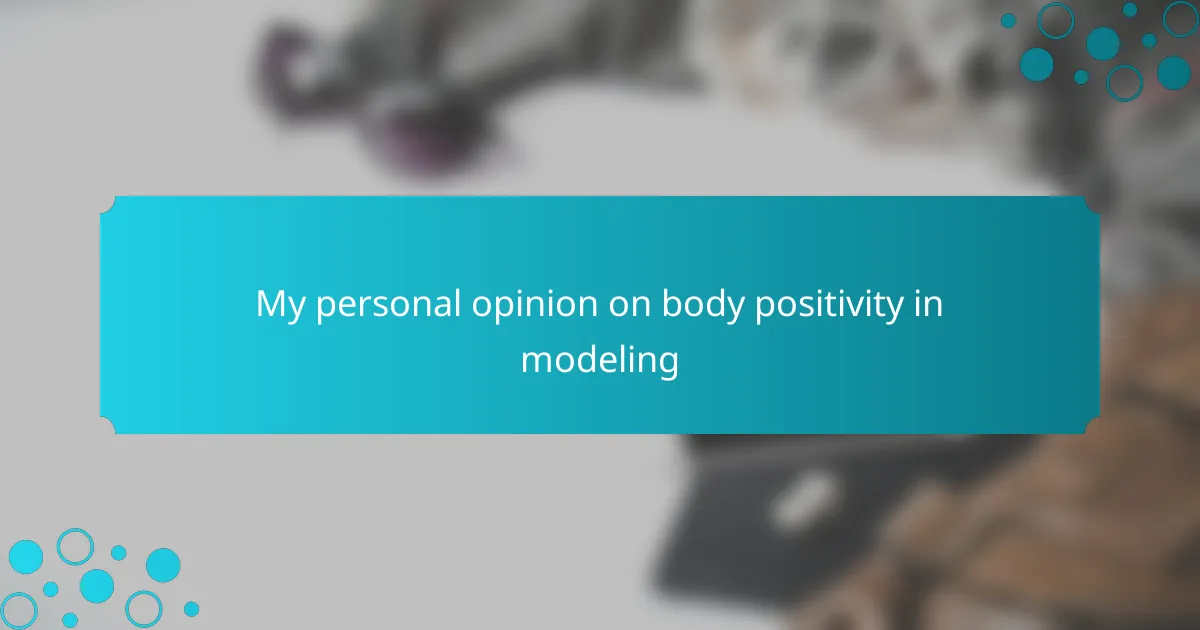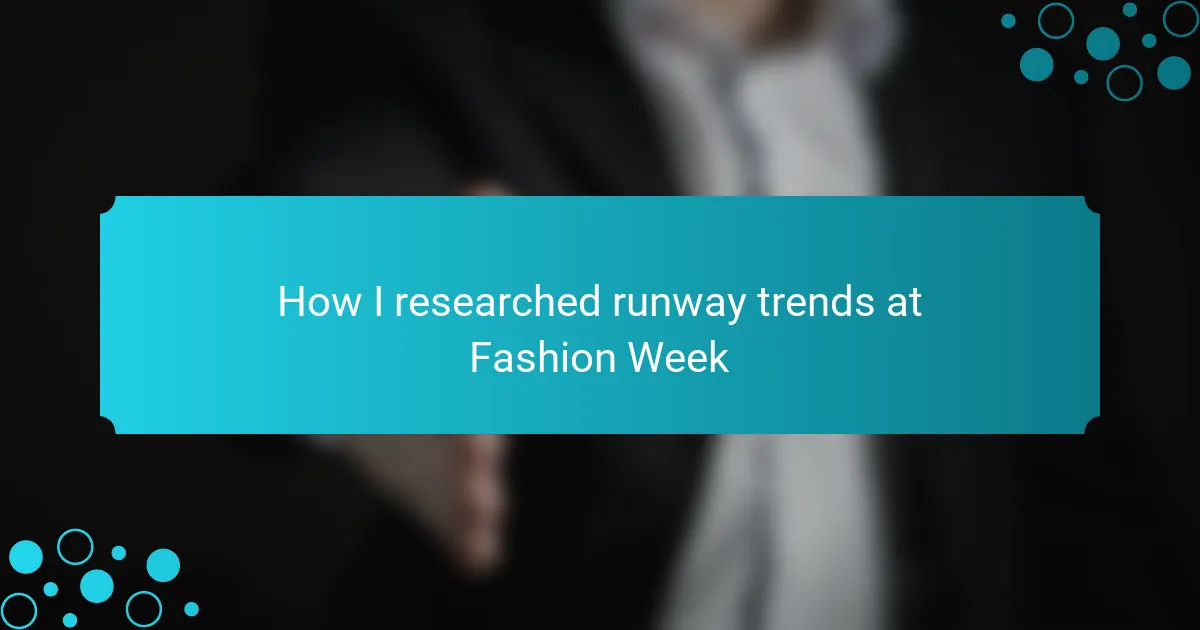Key takeaways
- Lighting significantly influences the mood and narrative of fashion photography, with techniques like backlighting and natural light enhancing visual appeal.
- Natural light creates a soft, flattering look, especially during golden hour, while studio lighting allows for precise control and dramatic effects.
- Experimentation with different lighting setups, including mixed lighting, can yield unique and captivating results in modeling.
- Understanding the interplay of light and shadows can add depth and texture to photos, enhancing the overall impact of the image.
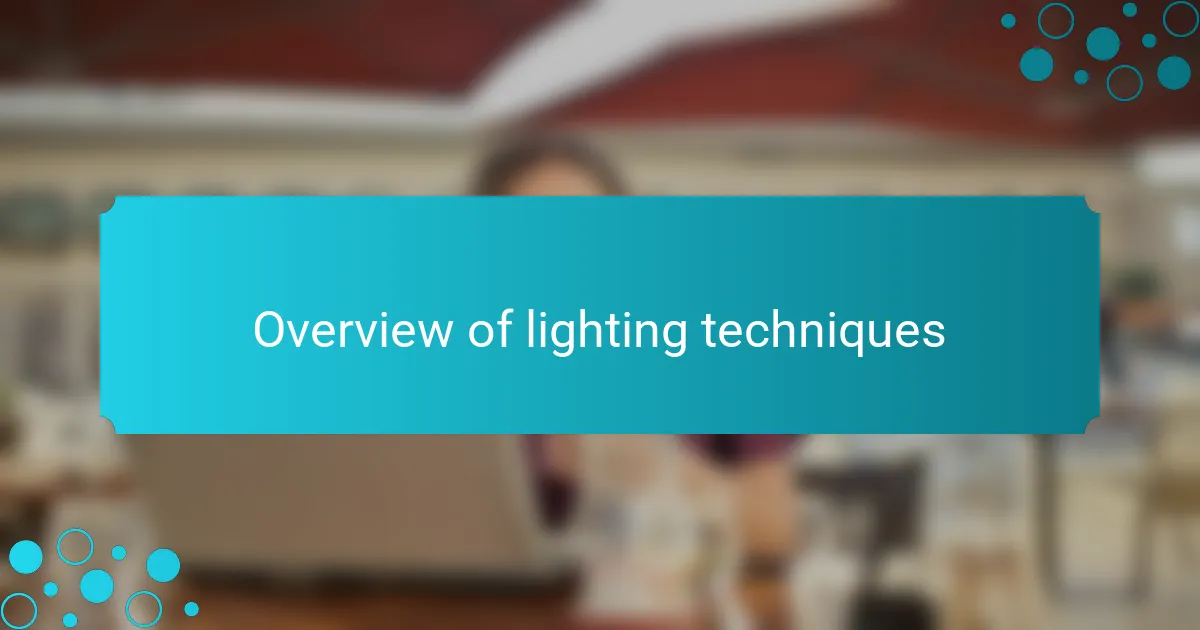
Overview of lighting techniques
When it comes to lighting techniques in fashion modeling, understanding how to manipulate light can dramatically transform a photoshoot. I remember my early days in Milan, where the interplay of natural light against architectural backdrops created stunning visuals that just can’t be replicated. Utilizing different lighting setups can evoke various moods—whether it’s soft and romantic or stark and dramatic, each choice shapes the narrative of the image.
One key lighting technique I’ve found particularly effective is the use of backlighting. It adds depth and can create a beautiful halo effect around the model, bringing an ethereal quality to fashion photography. I often experiment with contrasting the subject against a vibrant background, which enhances the overall aesthetic of the shoot.
Here’s a quick comparison of some popular lighting techniques commonly used in fashion:
| Technique | Description |
|---|---|
| Natural Light | Utilizes sunlight for softer images, often during golden hour. |
| Studio Light | Controlled lighting with artificial sources, ideal for consistent results. |
| Backlighting | Light comes from behind the subject, creating depth and a glowing effect. |
| High Key | Bright, even lighting reduces shadows, conveying a cheerful feel. |
| Low Key | Dominantly dark tones with high contrast, producing a moody atmosphere. |
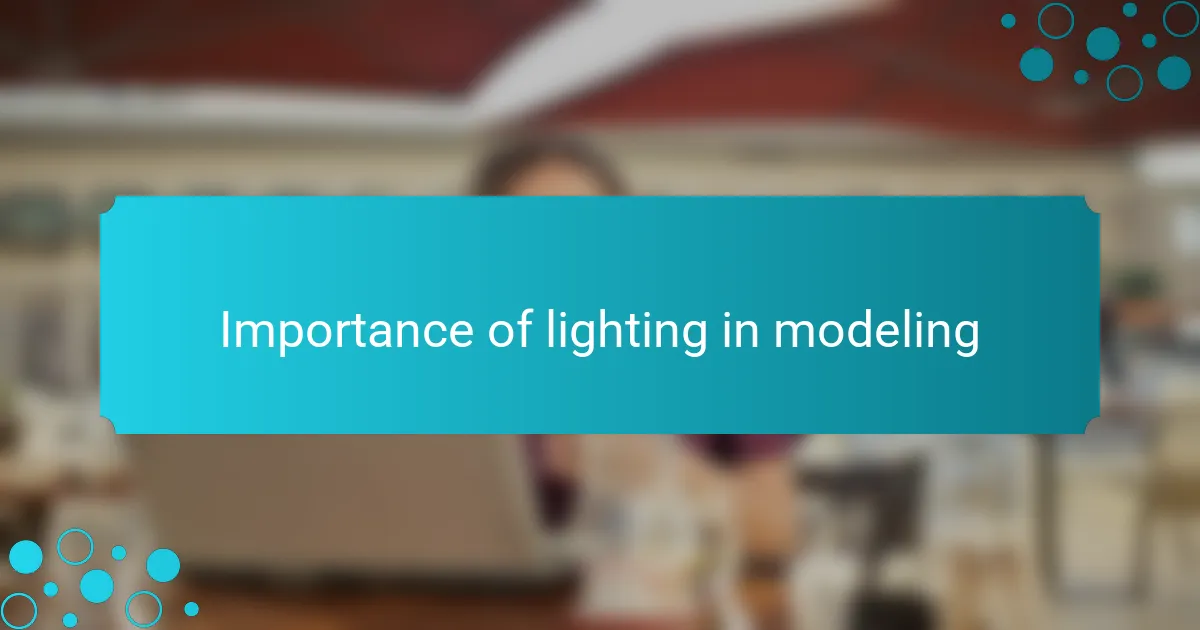
Importance of lighting in modeling
Lighting plays an essential role in modeling, as it can make or break a photograph. I still recall a particular shoot in Milan, where the interplay of light revealed textures on the fabric in ways I hadn’t anticipated. It’s almost like magic—how the right lighting can accentuate features and evoke emotions in the viewer.
Consider how natural light can soften a look or create a sense of intimacy in a portrait. I often find myself thinking about how shadows dance across a model’s face, adding depth and intrigue. Isn’t it fascinating how subtle shifts in light can completely change the vibe of the shot?
In my experience, using a mix of techniques, such as backlighting and high-key lighting, allows for a dynamic range in style. Each setup presents unique opportunities to tell a story. Have you ever noticed how a certain lighting angle can highlight a model’s expression in a way that resonates deeply? That’s the power of lighting—it’s all about creating connection and capturing the essence of the moment.
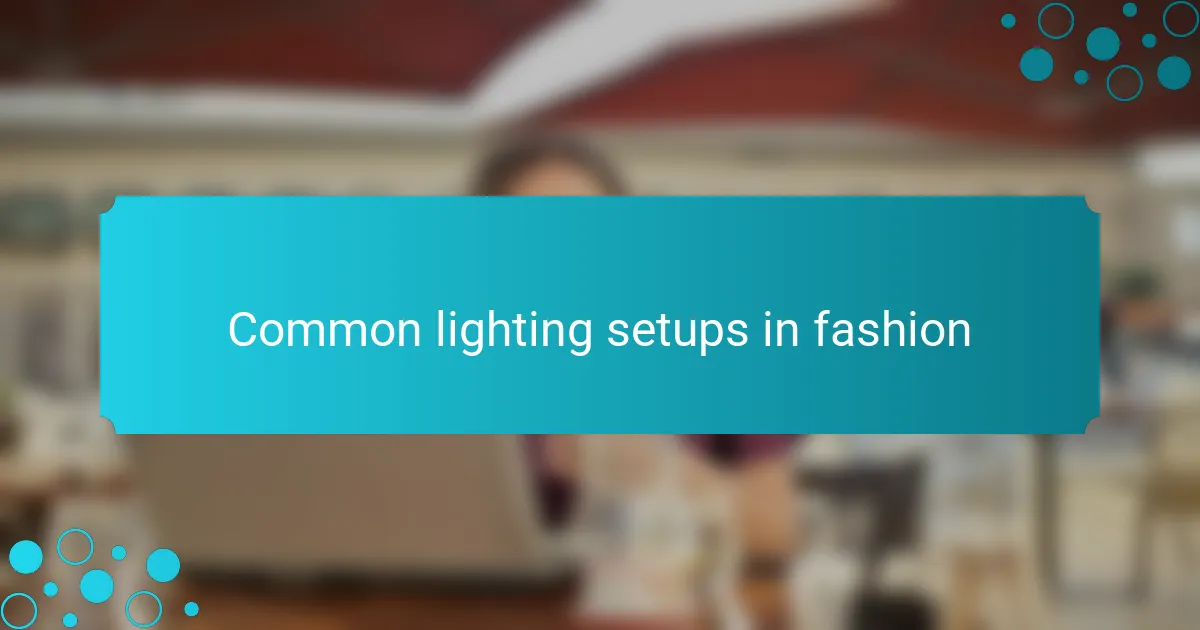
Common lighting setups in fashion
In the world of fashion photography, lighting is vital. I’ve found that common setups, like natural light and studio strobes, can dramatically change the mood of a shoot. For instance, natural light creates a soft and flattering look, which is perfect for outdoor shoots, while strobes offer the control needed for more dramatic fashion statements.
Sometimes, I prefer shooting with a mix of both. Using reflectors with natural light, I’ve managed to give depth to my subjects while maintaining that beautiful, soft glow. It’s fascinating how a slight change in lighting can evoke entirely different emotions in the images we create.
| Lighting Setup | Description |
|---|---|
| Natural Light | Soft, diffuse lighting ideal for outdoor settings. |
| Studio Strobes | Powerful flashes that offer creative control and versatility. |
| Continuous Light | Stable source that allows for real-time adjustments. |
| Backlighting | Creates dramatic silhouettes and highlights the subject’s outline. |
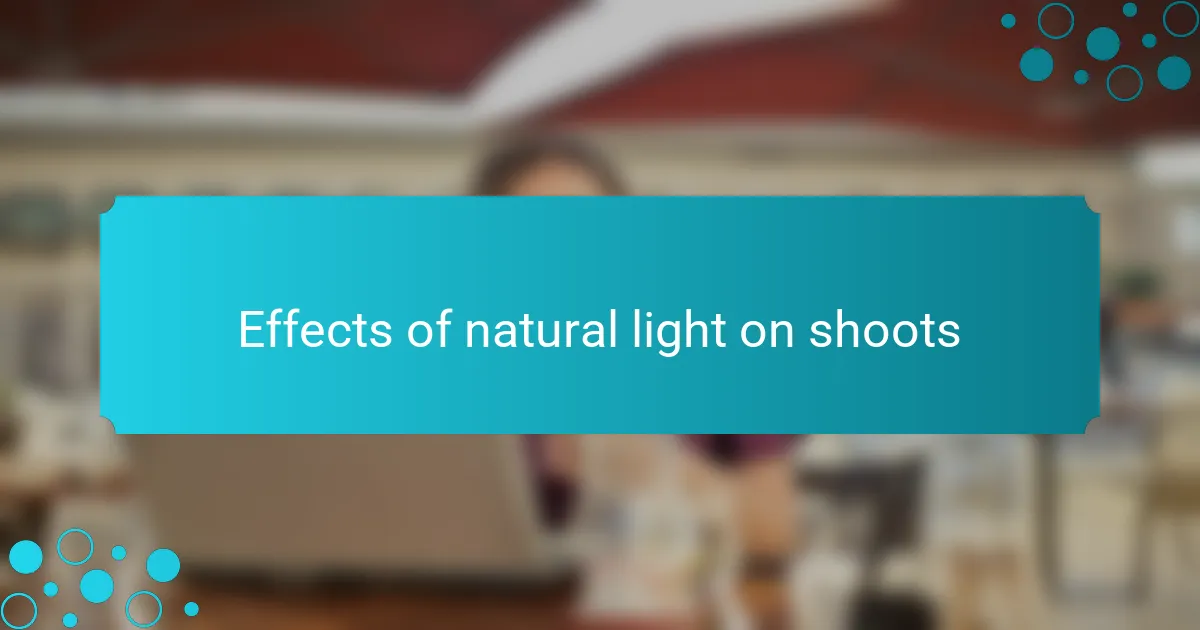
Effects of natural light on shoots
Natural light has an incredible ability to transform a scene during a photo shoot. I remember the first time I shot outdoors in Milan’s stunning piazzas; the soft glow of the early morning sun created a magical vibe that I couldn’t replicate in the studio. It’s as if the light kisses the skin, highlighting features and bringing garments to life in a way that feels both organic and captivating.
When working with natural light, it’s essential to consider its changing qualities throughout the day. The golden hour, just before sunset, is particularly enchanting, as it bathes everything in warm tones. From my experience, this time can evoke a sense of nostalgia and beauty that resonates deeply with viewers.
- Natural light enhances skin tones, making them appear more radiant.
- The direction of the light can create interesting shadows, adding depth to the images.
- Shooting in natural light highlights textures in clothing, contributing to a more dynamic photograph.
- It fosters a relaxed atmosphere, allowing models to feel more comfortable and genuine.
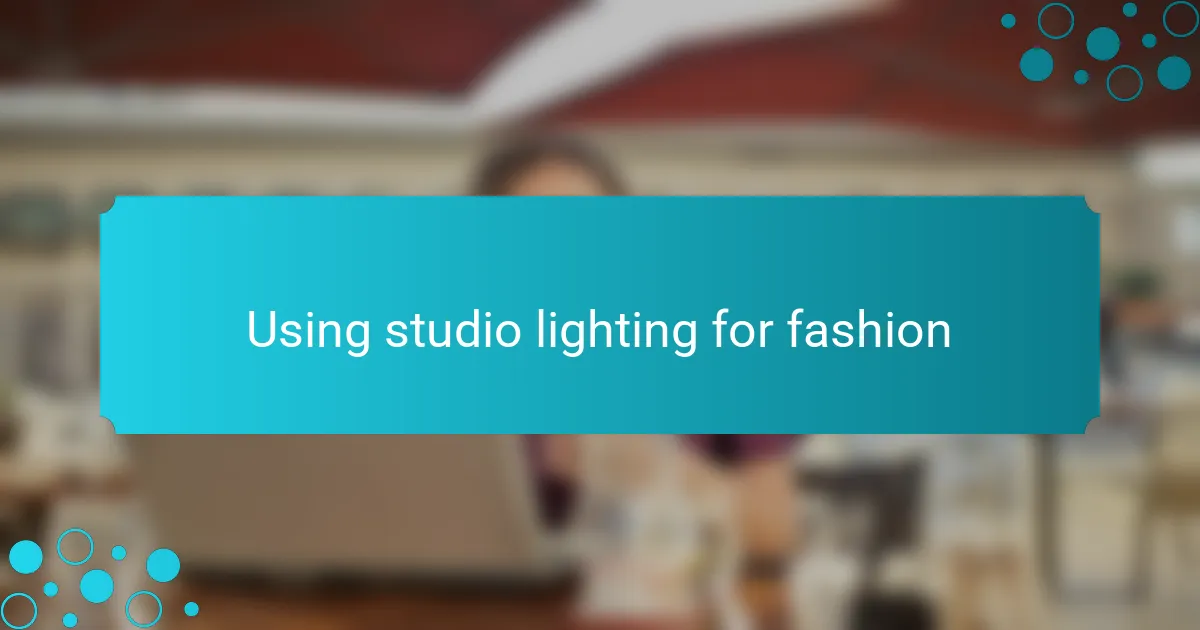
Using studio lighting for fashion
Using studio lighting for fashion allows for remarkable precision in creating the desired mood and effect in photography. I remember my first experiences with studio strobes, marveling at how I could sculpt light to highlight every fold and texture of the fabric. It was a game-changer for me, offering a canvas where every beam could be adjusted to tell a different story.
One technique I enjoy is the softbox setup. It diffuses the light, creating a gentle glow that flatters the model’s features without harsh shadows. Have you ever seen how this technique can almost make the skin appear luminous? The difference is striking, and it’s fascinating to think about how just one change in lighting can transform an image from ordinary to extraordinary.
I also love experimenting with high-key lighting in the studio. This technique produces vibrant, even lighting, which can evoke a cheerful and playful atmosphere. I often find that it works beautifully for upbeat fashion pieces, allowing colors to pop and making everything feel fresh. In my experience, it’s all about playing with the light until you find that perfect balance that captures the essence of the moment.

Personal experiences with Milan lighting
When I think about lighting in Milan, I remember the moment I stepped out onto the cobblestone streets during golden hour. The way the soft sunlight bathed everything in a warm hue made the city feel alive, accentuating every sleek outfit on display. It was in that magical light that I truly realized how much the right illumination can enhance both fashion and mood.
On set, I’ve experimented with various lighting techniques, and I often find that the natural diffused light in Milan creates a depth to photographs that studio lights sometimes lack. I recall a specific shoot near the Duomo, where the interplay of shadows and highlights on the model’s features brought out a sense of drama and elegance that was strikingly beautiful. It made me appreciate how vital it is to know not just how to pose but how to interact with the light around you.
- Natural light offers a warm, flattering effect, perfect for fashion shoots.
- The interplay of shadows and shapes can add depth and texture to images.
- Milan’s architectural details create unique lighting scenarios that enhance model poses.
- Experimenting with reflections, especially near fountains and glass buildings, yields stunning results.
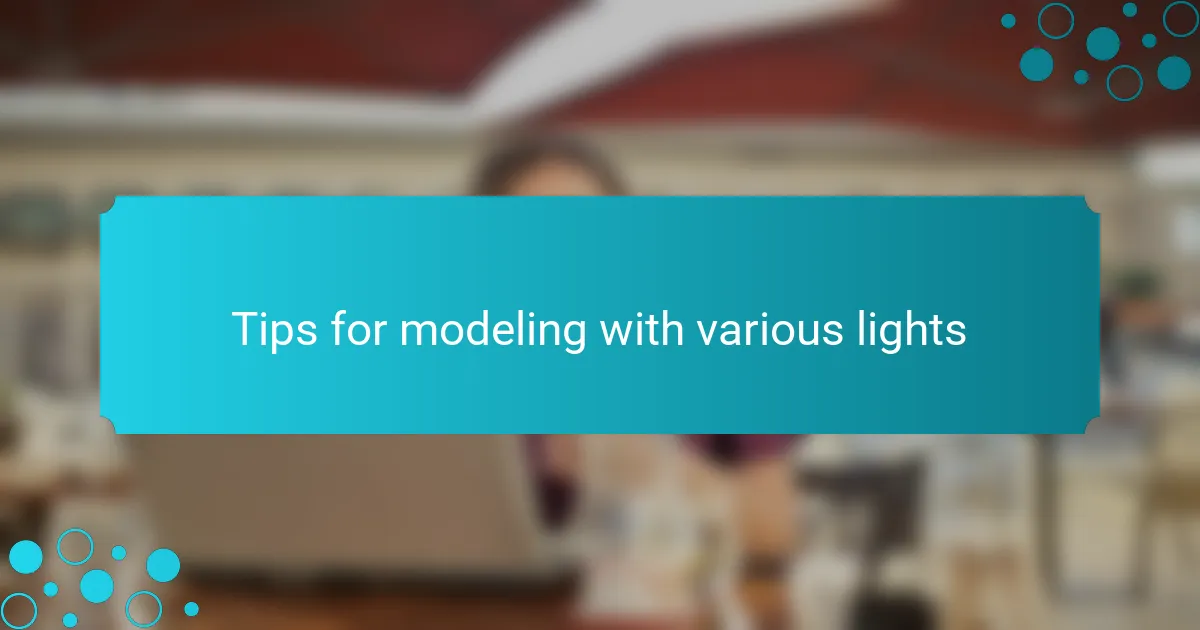
Tips for modeling with various lights
When working with different lighting setups, I’ve discovered that experimentation is key. For instance, using a reflector to bounce light can dramatically enhance the model’s features and add dimension to the shot. Have you ever tried that? It truly makes a difference in how the image feels—suddenly everything becomes more vibrant and engaging.
One of my favorite tips is to adjust your position in relation to the light source. I often play with angles to see how shadows fall on the model’s face. I recall a shoot where I slightly tilted the angle of the light, and it transformed an ordinary pose into something captivating. Light has a wonderful way of creating magic when you let it!
Also, don’t shy away from using mixed lighting. Combining natural light with studio sources can lead to fascinating results. I once captured a shot where soft sunlight streamed in through a window while an overhead strobe highlighted the details of a striking outfit. The contrast was stunning and added a layer of complexity that resonated with viewers. It’s moments like these that remind me of why I love working with light—every adjustment tells a new story.
